June 1, 2018
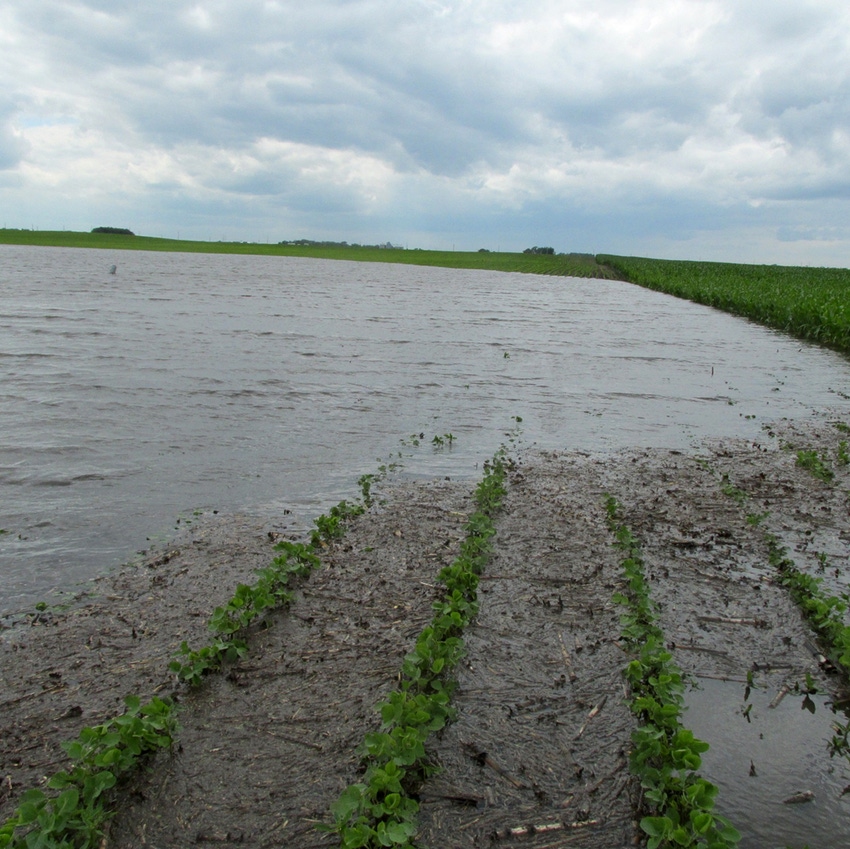
Think Different.
Many producers believe tiling pays on low-lying, wet soils. But tiling is expensive, and in wet springs after heavy rains, water still stands in many potholes that have been drained, even with intakes in them. Management practices that help ensure rainfall infiltrates where it falls to keep it from reaching potholes in the first place is a cost-effective option. You not only shrink the size of areas impacted by excess water, you also build soil at the same time.
-----------
Game on. Spring rains bring the annual farmer fight against nature to get crops planted into low-lying bottomland areas or ponds. Nature often wins, especially in years like this one complicated by cool temperatures in April. It’s a loss for the producer who gets bogged down in the mud. It’s also risky to wait to plant the whole field because wet areas aren’t yet fit to plant. The inability to plant just the ponded area itself in a timely way is a loss to the producer, too. The cost to replant drowned out crops and the spread of weeds from these areas takes a toll.
Even tiled potholes lose yield
Team Pothole, a group of ISU researchers studying different approaches to managing farmed potholes, has research sites at several of ISU’s research farms. “The research farm sites are all very conventionally managed,” says team member Dr. Amy Kaleita of ISU’s Ag and Biosystems Engineering Department. “One site is managed using aggressive, deep tillage. All the sites, with the exception of one that has been in CRP for 10 years, have some tile installed. Some have tile lines nearby, others have tile directly underneath the potholes and some have surface inlets in the pothole.”
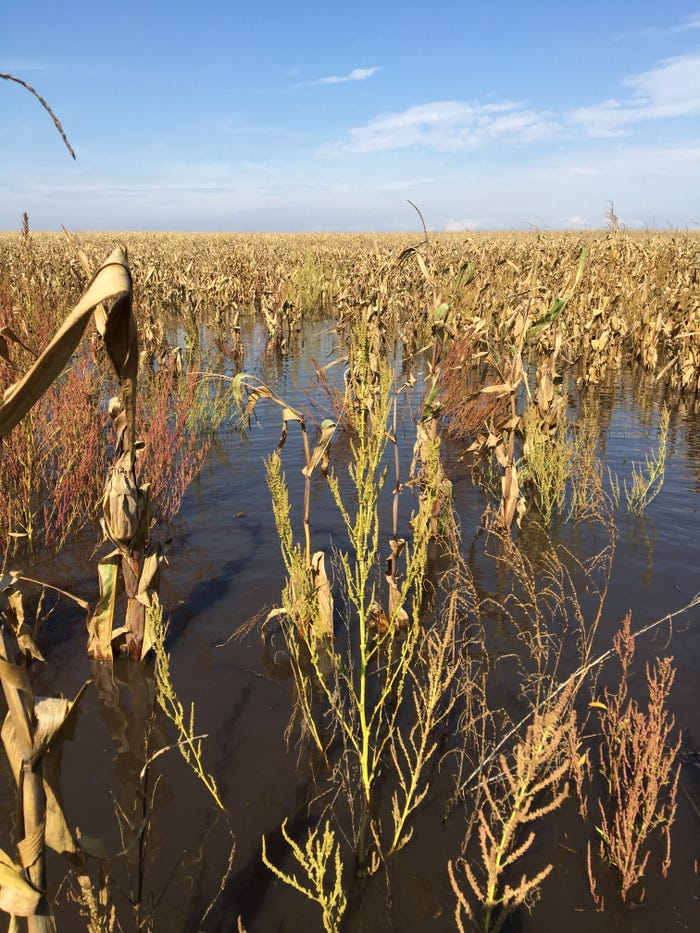
Tile drains on Iowa State University study sites helped reduce the size of the potholes’ flooded area and length of time of ponded water, but the drainage didn’t eliminate the problem at any site. In the pothole shown here in late September 2016, standing water was present for several weeks late in the season, after some early-season standing water reduced most of the crop cover in the pothole, despite newly installed pattern tile underlying the pothole. Here, the pothole is full of not only water but also weeds.
The researchers have found that all potholes in the project flood from time to time, sometimes for less than a day, and sometimes for as long as a few weeks. “Research has shown young corn and soybean plants are unlikely to survive ponded water greater than 4 inches deep for any length of time,” Kaleita says, “and yield losses come with plants that have been stressed by standing water for only a short time.” She says all ISU research sites have shown crop yield losses in farmed potholes in some years.
“Potholes in the study flooded even when they have tile drains and surface inlets,” Kaleita says. “More extensive tile drainage helps somewhat, but it won’t eliminate the problem. One thing to keep in mind is if the rest of the tile system is full of water after heavy rains in saturated fields, there’s no place for that water to go until the line downstream is cleared out. We suspect that’s the case in some of our potholes.”
Another finding Kaleita says to keep in mind is that even though we think of potholes as draining poorly, more water ultimately drains through soils in potholes than in upslope positions. “That’s because water runs off the upslope to concentrate in the potholes,” she says.
Potholes lose money 66% of time
A 9-year financial analysis by the Iowa Soybean Association of 8,500 acres of central Iowa cropland found corn yields in pothole acres averaged 10% lower than uplands, and soybean yields were 17% lower. While overall yields produced a profit over the 9 years, in 6 of the 9 years, potholes lost an average of $32.36 per acre per year.
As most climate models predict more intense precipitation in the future, prairie potholes are likely to flood more often, says Kaleita. That points to consideration of other options or changes in management, she says. She offers three management options:
Stop farming potholes. An option is to enroll pothole acres in USDA’s CRP, Farmable Wetlands, or pollinator programs or otherwise let them stay wet.
Switch crops. More resilient perennial crops could be planted. Team Pothole is gearing up for new field studies on relative survival rates for miscanthus, an energy crop that has a potential to provide income in potholes.
Keep farming potholes but adjust other farm management practices so less water is delivered to pothole areas in the first place. Dial back on tillage—just reducing tillage reduced the number of ponded days by a day per month in the ISU studies. Include cover crops or adjust crop rotations to encourage better water infiltration on uplands. “Anything you can do to reduce runoff from other areas of the field will reduce the size of the pothole and length of time water stands,” Kaleita says.
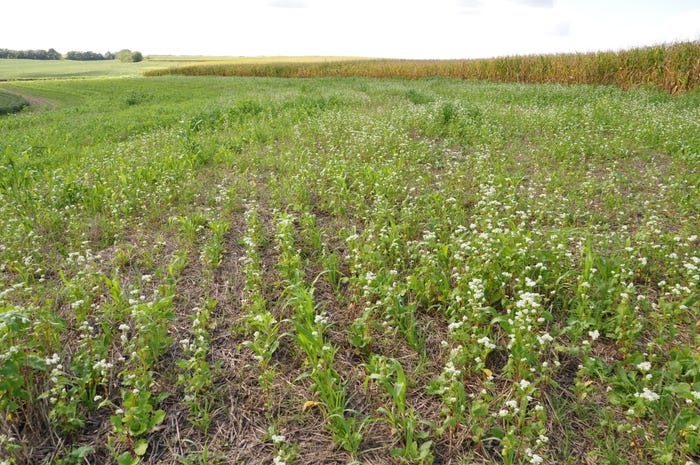
Diverse cover crop mixes and crop rotations regenerate soils more quickly than single species, plus they are an important component of building soils that infiltrate more water.
Soil health improves water infiltration
Jeff Zimprich, State Conservationist for the USDA NRCS in South Dakota, likes the option that keeps water where it falls. “Water is a resource we can’t afford to waste,” Zimprich says. “We need to use it on uplands, not lose it to lowlands. That means we’ve got to do a better job of encouraging rainwater to infiltrate right where it falls.”
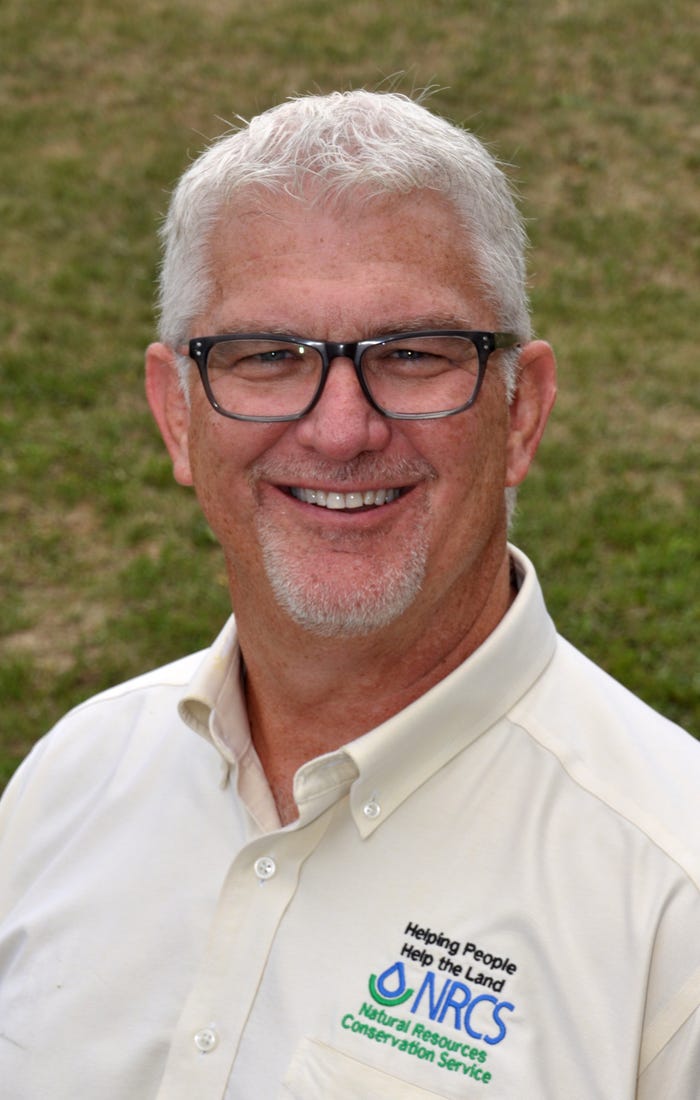
Jeff Zimprich, State Conservationist, NRCS, South Dakota.
“Our landscapes are interrelated. If we allow water from uplands to run off and concentrate in depressions, we just compound our problems. We not only lose a resource that could have been used to grow better crops on uplands in a dry summer, we concentrate too much of it in another place to cause more problems.”
“Here in South Dakota, we want snow in the winter, so we have enough moisture for the next year’s crop. We’ve gone through a drought the past couple of years and know what it means to not have enough water for our crop,” Zimprich says. “So, we want to do everything we can to catch the rain that falls and keep it in place for our crops.”
Zimprich says spring rains and runoff to low-lying areas prompt calls to NRCS offices every year, with questions from farmers about what they can do with wet areas. “While some low-lying soils are hydric by nature, and may be classified as wetlands, other bottomland soils pond with runoff water because of the way both uplands and bottomland soils are farmed,” Zimprich says.
“Tilling upland soils results in poor infiltration of rainfall, encouraging excess water runoff to low-lying field areas. That’s also true within a bottomland field, where water can run for a distance to a lower area from the surrounding land. An option to tilling upland soils and tiling bottomlands is to build healthier soils at both landscape locations. Regenerated, healthy soils on uplands hold topsoil in place, help rainfall infiltrate into the soil, and build water-holding capacity for more efficient water use by crops.”
Soil health practices like no-till, cover crops, keeping something green on the land throughout the year, and diversifying crop rotations also build structure on wet bottomland soils that discourages soil crusting, eases soil compaction, and distributes water throughout the soil profile.
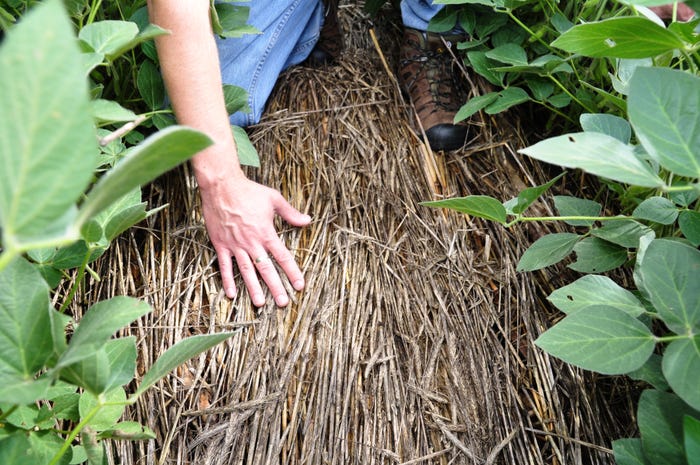
Healthy soil practices are a proactive approach to cut the amount of water in a pothole and reduce the length of time it stays there. This mat of residue from a rolled rye cover crop, along with no-till, encourages infiltration of rainwater and limits runoff.
Soils absorbed 13-inch rainfall
A few years ago in Burleigh County, North Dakota, Gabe Brown took a photo of one of his low-lying fields after 13 inches of rain fell in 24 hours. The picture shows no standing water, when neighbors fields were inundated. Brown, a farmer who’s a national leader in regenerating healthy soils through a healthy biological food web, has created a soil profile that allows water to infiltrate quite efficiently. Unlike a field that’s been drained through artificial tiling—sending water through the profile and eventually downstream—Brown’s fields retain that moisture in the system, allowing plants to access it during drier periods.
Farmers like Brown who build healthy soil make better use of water in part because of the increase in soil organic matter. As soil organic matter increases from 1% to 3%, soil’s water holding capacity doubles. Brown has more than doubled the organic matter in some of his fields in the past 10 years, raising it from less than 2% to nearly 5%.
Finally, before improving any wet field areas, check out this story to understand the importance of contacting NRCS for a wetland determination to reduce potential loss of USDA benefits.
About the Author(s)
You May Also Like




